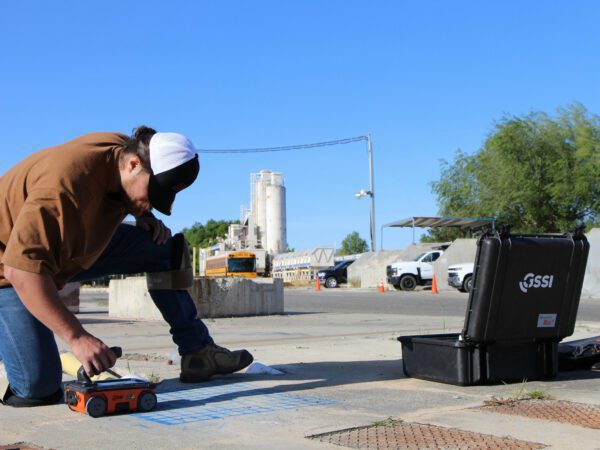Concrete Scanning: A Critical Step Towards Making Certain Structural Integrity and Safety And Security
In the world of building and framework maintenance, the value of concrete scanning can not be overstated. This precise procedure holds the vital to introducing prospective threats concealed below the surface of relatively solid frameworks. By employing advanced technology and methodologies, concrete scanning functions as a critical device in making sure that the integrity and safety of bridges and structures are upheld to the greatest requirements. Nevertheless, past its surface-level implications, the duty of concrete scanning extends far much deeper than satisfies the eye.
Importance of Concrete Scanning
Concrete scanning plays a critical role in ensuring the architectural stability and safety of buildings and infrastructure jobs. By utilizing innovative technologies such as ground-penetrating radar (GPR) and electromagnetic induction, experts can non-destructively check concrete frameworks to discover prospective problems, gaps, ingrained objects, and reinforcement format. This process enables very early discovery of anomalies that could jeopardize the stability of a framework, avoiding expensive damages and making sure the safety of passengers.
Concrete scanning is especially essential throughout the planning and building stages of a project. Before boring, reducing, or coring right into concrete, scanning aids determine the specific areas of rebar, post-tension cords, and various other ingrained elements, decreasing the threat of unintentional hits that might bring about architectural weaknesses. In addition, concrete scanning aids in high quality control by verifying the thickness of concrete covers and spotting any type of discrepancies that might impact the general resilience of the framework. Eventually, investing in concrete scanning services is not just a positive step to mitigate threats yet likewise a basic action in the direction of maintaining the long-lasting safety and security and security of structures and facilities.
Innovation for Concrete Inspection

Advantages of Very Early Detection
Timely detection of architectural problems can significantly reduce threats and guarantee the durability of building and construction projects. By identifying potential troubles early in the construction process, stakeholders can take aggressive actions to deal with concerns before they escalate into bigger and a lot more pricey problems. One of the vital advantages of very early discovery is the prevention of structural failings, which can pose significant security hazards and cause project delays and monetary losses.
Additionally, early discovery permits prompt repair work and upkeep, which can aid prolong the lifespan of the framework. By resolving problems immediately, building and construction groups can stay clear of pricey repairs and even the requirement for premature replacement of structural parts. This positive strategy not only saves money and time but also boosts the overall security and durability of the building and construction project.
Additionally, early detection can enhance project planning and Resources decision-making by offering stakeholders with beneficial insights into the condition of the framework. Equipped with this info, task managers can make educated options pertaining to building timelines, materials, and approaches, resulting in much more successful and efficient job end results.
Making Sure Architectural Security
Guaranteeing the structural security of a building job is extremely important to its security and durability. Structural stability describes the capability of a structure or facilities to preserve its kind and feature under ecological conditions and different lots. To achieve this, thorough evaluation and monitoring of the framework are crucial. Concrete scanning plays a vital role in making sure architectural security by identifying potential problems such as voids, delamination, or support rust that might endanger the integrity of the structure gradually.
By utilizing sophisticated scanning innovations like ground-penetrating radar (GPR) and electro-magnetic induction, building specialists can non-invasively evaluate concrete structures to identify areas of problem beneath the surface. This positive technique permits the early discovery of weak points or flaws, making it possible for timely repair services or reinforcement to prevent structural failings.
Normal concrete scanning throughout different construction phases and throughout the life process of a structure can aid maintain its security, minimize dangers, and ensure the safety and security of passengers. By focusing on structural stability with concrete scanning, building and construction projects can boost their resilience and toughness, ultimately adding to higher safety and security and durability.
Stopping Crucial Failings
To protect versus devastating occasions, meticulous tracking and proactive maintenance are important in averting essential failings within structural structures. Identifying possible concerns before they escalate is crucial to avoid architectural failures. Applying routine assessments, such as concrete scanning, can expose concealed problems like voids, splits, or rust that can jeopardize the stability of a framework. By using advanced scanning innovations like Ground Passing through Radar (GPR) or Concrete X-ray, engineers can non-destructively analyze the condition of concrete and identify weak points that call for reinforcement or fixing - RainierGPR Service Areas.

Verdict
Finally, concrete scanning plays a critical role in making certain structural honesty and security by utilizing innovative technology for very early discovery of potential concerns. This positive technique assists prevent important failings and makes certain the security of frameworks. It is important to prioritize concrete assessment as a conventional practice to protect the longevity and safety of structures and infrastructure.
Concrete scanning plays a vital duty in ensuring the structural stability and safety of buildings and facilities jobs. Furthermore, concrete scanning help in high quality control by verifying the density of concrete covers and finding any kind of disparities that may influence the total toughness of the framework. Concrete scanning plays a critical role in making certain structural stability by detecting prospective problems such as browse around here voids, delamination, or reinforcement deterioration that might endanger the stability of the structure over time.

In final thought, concrete scanning plays a vital role in making certain structural integrity and safety by using innovative technology for early discovery of possible issues.